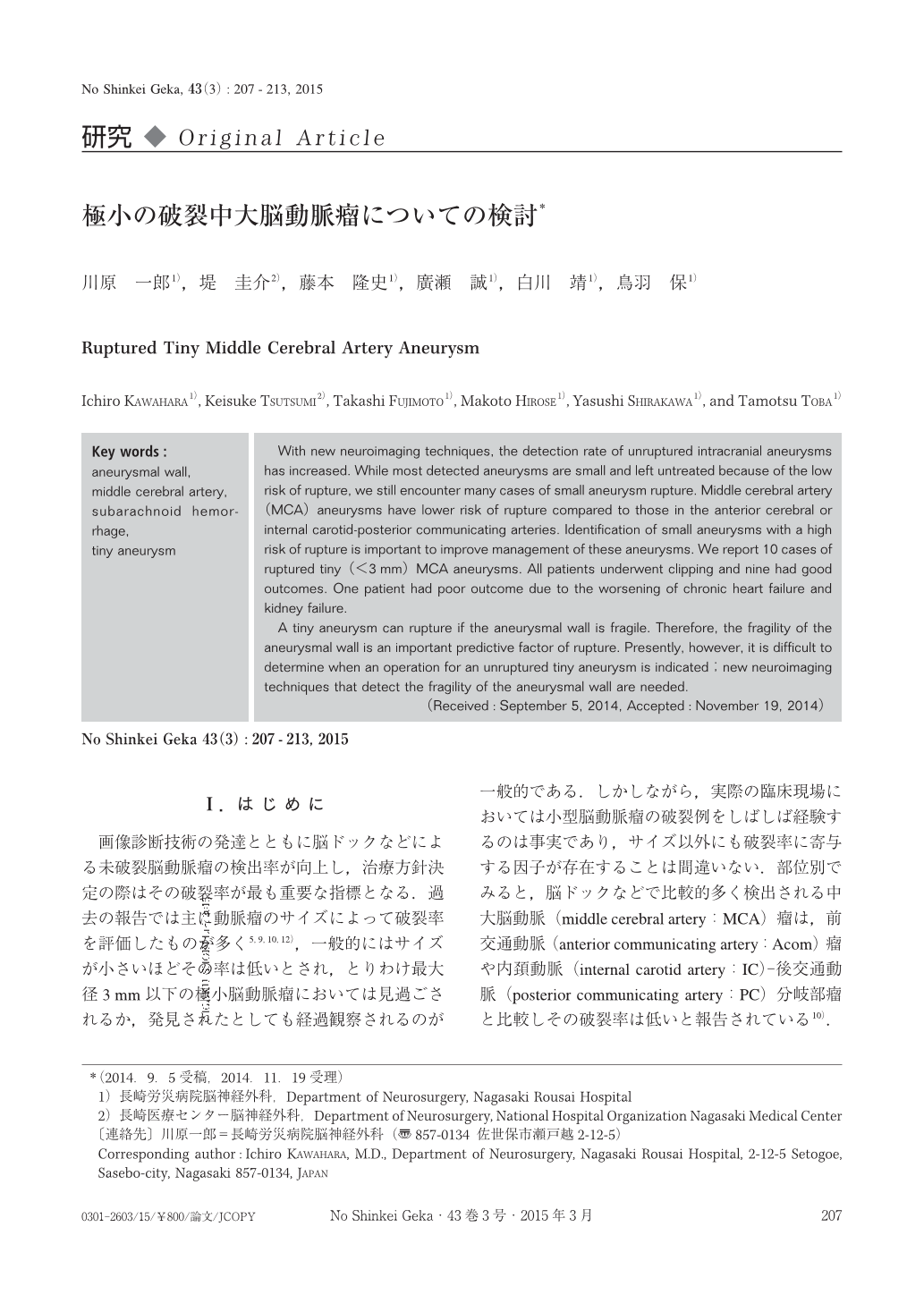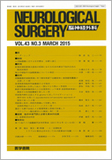Japanese
English
- 有料閲覧
- Abstract 文献概要
- 1ページ目 Look Inside
- 参考文献 Reference
Ⅰ.はじめに
画像診断技術の発達とともに脳ドックなどによる未破裂脳動脈瘤の検出率が向上し,治療方針決定の際はその破裂率が最も重要な指標となる.過去の報告では主に動脈瘤のサイズによって破裂率を評価したものが多く5,9,10,12),一般的にはサイズが小さいほどその率は低いとされ,とりわけ最大径3mm以下の極小脳動脈瘤においては見過ごされるか,発見されたとしても経過観察されるのが一般的である.しかしながら,実際の臨床現場においては小型脳動脈瘤の破裂例をしばしば経験するのは事実であり,サイズ以外にも破裂率に寄与する因子が存在することは間違いない.部位別でみると,脳ドックなどで比較的多く検出される中大脳動脈(middle cerebral artery:MCA)瘤は,前交通動脈(anterior communicating artery:Acom)瘤や内頚動脈(internal carotid artery:IC)-後交通動脈(posterior communicating artery:PC)分岐部瘤と比較しその破裂率は低いと報告されている10).そこで今回われわれは,MCA瘤に限定して,極小脳動脈瘤の破裂例を数例経験したので文献的考察を加えて調査報告する.
With new neuroimaging techniques, the detection rate of unruptured intracranial aneurysms has increased. While most detected aneurysms are small and left untreated because of the low risk of rupture, we still encounter many cases of small aneurysm rupture. Middle cerebral artery(MCA)aneurysms have lower risk of rupture compared to those in the anterior cerebral or internal carotid-posterior communicating arteries. Identification of small aneurysms with a high risk of rupture is important to improve management of these aneurysms. We report 10 cases of ruptured tiny(<3mm)MCA aneurysms. All patients underwent clipping and nine had good outcomes. One patient had poor outcome due to the worsening of chronic heart failure and kidney failure.
A tiny aneurysm can rupture if the aneurysmal wall is fragile. Therefore, the fragility of the aneurysmal wall is an important predictive factor of rupture. Presently, however, it is difficult to determine when an operation for an unruptured tiny aneurysm is indicated;new neuroimaging techniques that detect the fragility of the aneurysmal wall are needed.

Copyright © 2015, Igaku-Shoin Ltd. All rights reserved.


